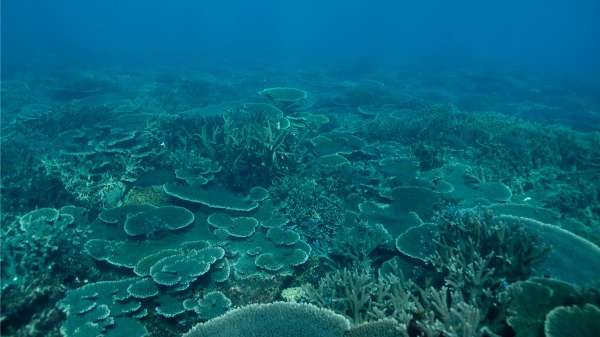Help arriving too late for Abrolhos Islands' fragile coral

The coral wonderlands of the Abrolhos Islands off the Mid West coast, and the fishing industries that rely on them, are at worse risk of damage from climate change than previously thought.
New research has shown that coral larvae carried on the Leeuwin Current from elsewhere are unlikely to bolster the fragile reef system which died off in vast quantities during the 2011 heat wave.
The heat wave caused the first recorded thermal coral bleaching at the islands, resulting in significant coral mortality.
The bleaching sparked questions over the future survival of this underwater wonderland, which many liken in beauty to the Great Barrier Reef.
Should the corals die out, the foundation for the whole marine ecosystem could crumble, thus threatening the lobster, fin-fishing and tourism industries that operate there.
Scientists hoped that coral larvae from areas further north—at places such as Shark Bay, Ningaloo and the Dampier Archipelago—would float far enough south to replenish the lost corals at the Abrolhos.
This would enable the reef to regrow in the face of warmer waters predicted with climate change.
But no one knew if coral larvae would make the long journey in enough time to survive to replenish the dying reefs. So Department of Fisheries scientists determined to find out.
It's impossible to track individual coral larvae—sized less than the area of a pinhead—across a great swath of Indian Ocean.
So Fisheries senior research scientist Dave Abdo used hydrodynamic computer modelling in an attempt to find out.
"Eventually everything floating from northern waters could travel that far south," Dr Abdo says.
"But previous published research has shown that the longest-lived larvae last 110 days, so anything that didn't reach the Abrolhos in 110 days would be unlikely to be of benefit."
The modelling showed the larvae was taking longer than 110 days to reach the Abrolhos—with some larvae still arriving about 180 days later.
The finding spells bad news for this unique coral reef system.
"It means the whole pristine area out there will be more susceptible to the influence of global climate change," Dr Abdo says.
"There is likely to be new recruitment [from surviving corals at the Abrolhos] but this is a slow process and we haven't seen a significant increase [in] coral cover yet at our monitoring sites."
Should another marine heat wave occur, the consequent bleaching to the surviving reef would make the chances of self-replenishment diminish still further.
More information: Kathryn L. Markey et al. Keeping It Local: Dispersal Limitations of Coral Larvae to the High Latitude Coral Reefs of the Houtman Abrolhos Islands, PLOS ONE (2016).
Journal information: PLoS ONE
Provided by Science Network WA
This article first appeared on a science news website based at Scitech.




















